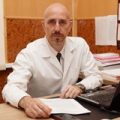The vivar laboratory of the Kuban State University was created in the early 20s of the last century, immediately after the creation of the university, but until 1974 it was not an independent unit and in different years was part of the departments of normal anatomy and physiology. Since 1974, after the vivarium was separated into an independent unit, it was headed by Arshinova Lyubov Mikhailovna, who worked in this position until 2006. In 2005, the Vivarium was reorganized into the Education Department. From 2006 to 2014, the position of head of the vivarium was performed by Honored Worker of Agriculture Aleftina Aleksandrovna Kalinina. Currently, the educational and production department is headed by the Honored Doctor of Kuban, Ushmarov Denis Igorevich. The department employs veterinarians: Nagornaya Tatiana Vladimirovna and Potapkina Tamara Nikolaevna; zootechnician Kandala Olga Nikolaevna. Four animal care workers provide direct care for the animals.
In 2014, the vivarium was reconstructed and overhauled in accordance with the requirements of the sanitary-epidemiological and veterinary legislation of the Russian Federation, as well as taking into account the requirements of international GMP and GLP standards.
The educational and production department is located in a one-storey, detached building, has an area of more than 350 m2, consists of an operating and vivary unit, a room for amphibians; has two laboratories: for non-invasive research methods and work with tissues; equipped with two-circuit separate supply and exhaust ventilation, cold and hot water supply, central heating. The facility’s biological safety level complies with ABSL-1 (minimum biohazard level). According to the classification adopted in the Russian Federation, it is permissible to carry out work with microorganisms of the IV pathogenicity group at the facility.
The vivarium contains conventional laboratory animals (mice, rats, guinea pigs, rabbits), which are used in biomedical experiments when performing research and conducting the educational process at the university departments. Laboratory animals are housed in standard cages on metal racks. In 2018, an installation for 50 boxes (individually ventilated cages – IVK) was purchased, each of which is an isolated clean room of the 5th class according to ISO. Such a system creates a barrier at the level of each cage and ensures the protection of animals from microorganisms, as well as a constant, controlled microclimate. In addition, it significantly reduces the spread of animal allergens in the air. This made it possible to carry out work with SPF rodent lines. The maximum number of animals at one time keeping is up to 500 mice, 300 rats, 30 rabbits and 4 large animals (pigs, rams). Up to 1000 frogs can be kept in an amphibian room at a time.
Animals are purchased only from certified nurseries that meet international requirements and guarantee the health and genetic status of the acquired animals.
The feeding of laboratory animals is full-ration, combined, is carried out in accordance with the daily feeding norms of laboratory animals, approved by the order of the rector of the university No. 527 dated 09.07.2015.
The operating unit is equipped in accordance with the requirements of GOSTs: R ISO 14644-4-2002 Part 4, R 51251-99 and SES (Sanitary and Epidemiological Standards) 2.1.3.2630-10 and is equipped with laparoscopic and endoscopic equipment, anesthetic and respiratory equipment, an ultrasound machine, a stationary operating microscope, auxiliary equipment and tools, which allows for experimental and scientific research, demonstration operations on laboratory animals, as well as training sessions with various categories of students.
Further improvement of the material and technical base continues. On the basis of the unit, student Olympiads are held in various disciplines of the regional, federal and international level.


